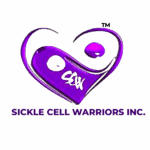 Laughing Gas Helps Control Pain
Laughing Gas Helps Control Pain
This week’s first piece of great news is that inhaling nitric oxide appears to safely and effectively reduce pain crises in adults with sickle cell disease. A study of 18 patients in Atlanta, Chicago and Detroit showed that the nine inhaling nitric oxide for four hours had better pain control than those receiving only the standard self-administered morphine, said Dr C. Alvin Head, chairman of the Department of Anesthesiology at the Medical College of Georgia School of Medicine.
“This study shows that you can breathe the gas and have less pain, which is the major reason sickle cell patients are admitted to the hospital,” said Head, corresponding author of the study published in the American Journal of Hematology.
They plan to do a larger study, which will figure out the dose and best way to inhale the nitric acid. In the future, inhalers might be made for sickle cell patients so they can use as soon as they get into crises. Although the extact etiology is unknown, the researchers believe that nitric oxide has a great affinity for hemoglobin, and then helps to restore the natural shape of the sickle cell and prevents cells from clumping up.
Patients who used nitric oxide in conjunction with morphine had less pain, used less morphine, and relief was felt up to 2 hours after the dose. There was no toxicity of nitric oxide. Kudos to this step ahead. Read more about the study HERE.
The University of Cincinnati received a $1.2 million grant to help expand the Ohio Valley Sickle Cell Network. The money will be used for serving the sickle cell population, sickle cell clinics and research.
In other news, surgeons from Boston Medical Center, have perfected a new technique to remove gall stones and liver stones from sickle cell patients without damaging the affected organ. This is not a surgical procedure, and is actually done using endoscopy, which allows the patient to heal faster, and prevents hemolytic anemia. Read more about the procedure HERE.
And that rounds up this week in sickle cell research.
